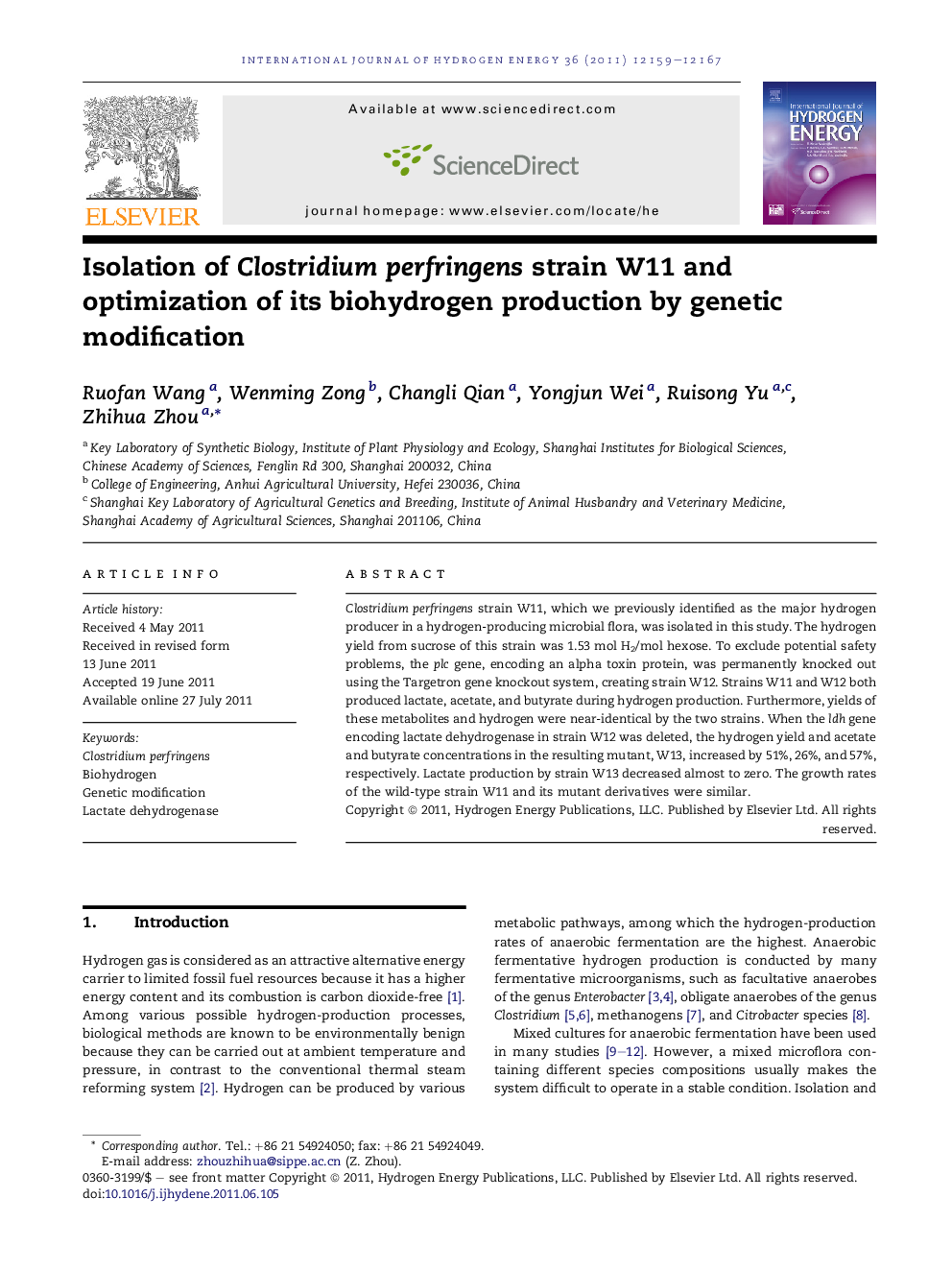| Article ID | Journal | Published Year | Pages | File Type |
|---|---|---|---|---|
| 1282416 | International Journal of Hydrogen Energy | 2011 | 9 Pages |
Clostridium perfringens strain W11, which we previously identified as the major hydrogen producer in a hydrogen-producing microbial flora, was isolated in this study. The hydrogen yield from sucrose of this strain was 1.53 mol H2/mol hexose. To exclude potential safety problems, the plc gene, encoding an alpha toxin protein, was permanently knocked out using the Targetron gene knockout system, creating strain W12. Strains W11 and W12 both produced lactate, acetate, and butyrate during hydrogen production. Furthermore, yields of these metabolites and hydrogen were near-identical by the two strains. When the ldh gene encoding lactate dehydrogenase in strain W12 was deleted, the hydrogen yield and acetate and butyrate concentrations in the resulting mutant, W13, increased by 51%, 26%, and 57%, respectively. Lactate production by strain W13 decreased almost to zero. The growth rates of the wild-type strain W11 and its mutant derivatives were similar.
► A dominant hydrogen producer Clostridium perfringens W11 was isolated from a microbial flora. ► A double-mutant strain Δplc/Δldh was constructed by genetic manipulation. ► Hydrogen yield, acetate and butyrate concentrations in the double mutant increased. ► Lactate concentration in the double mutant decreased almost to zero.
